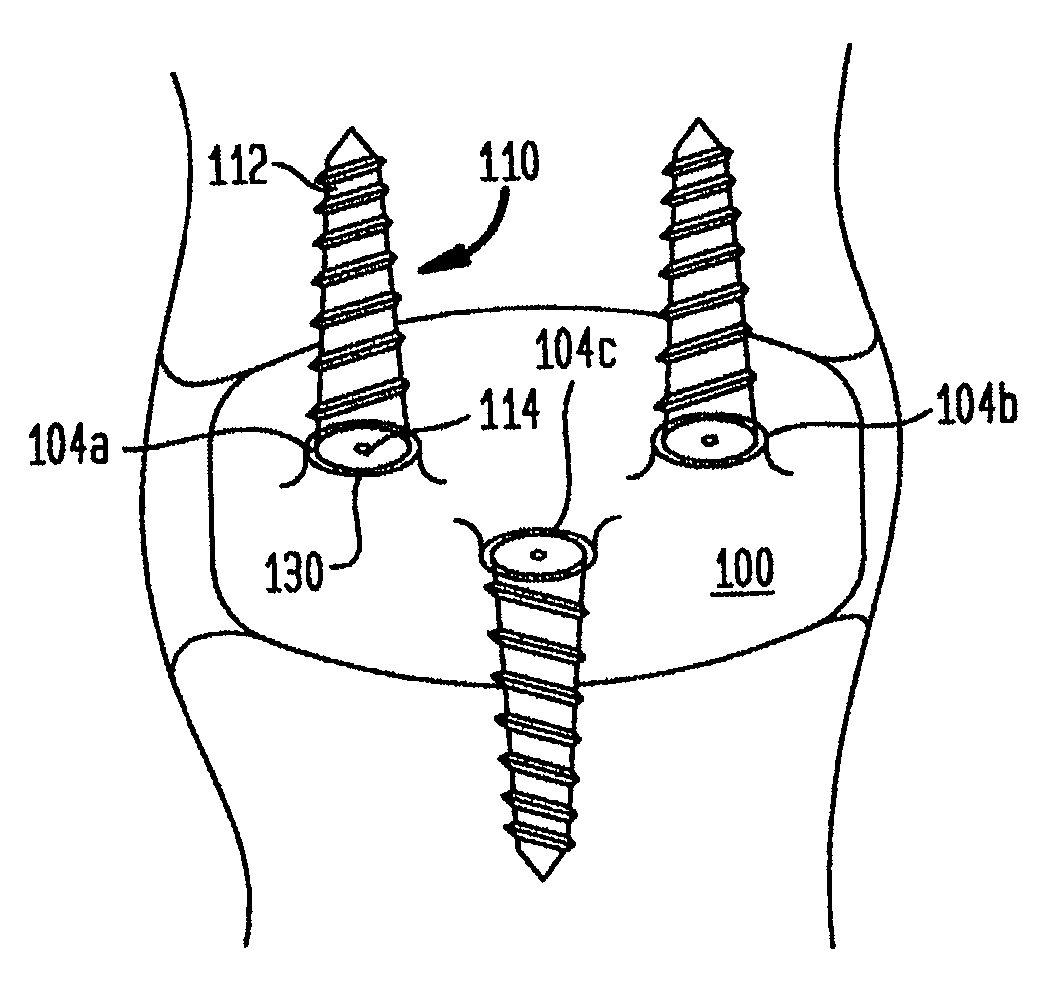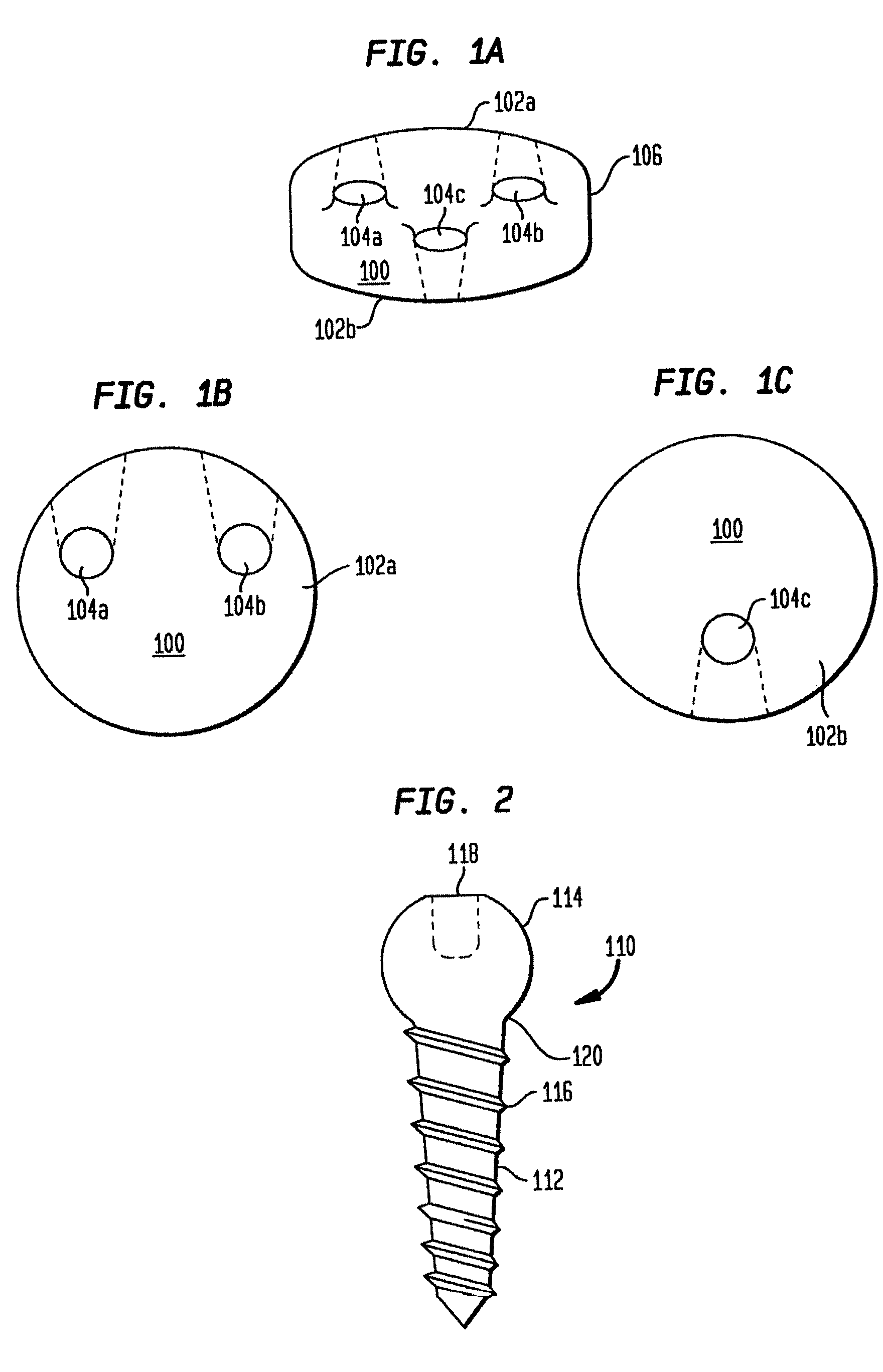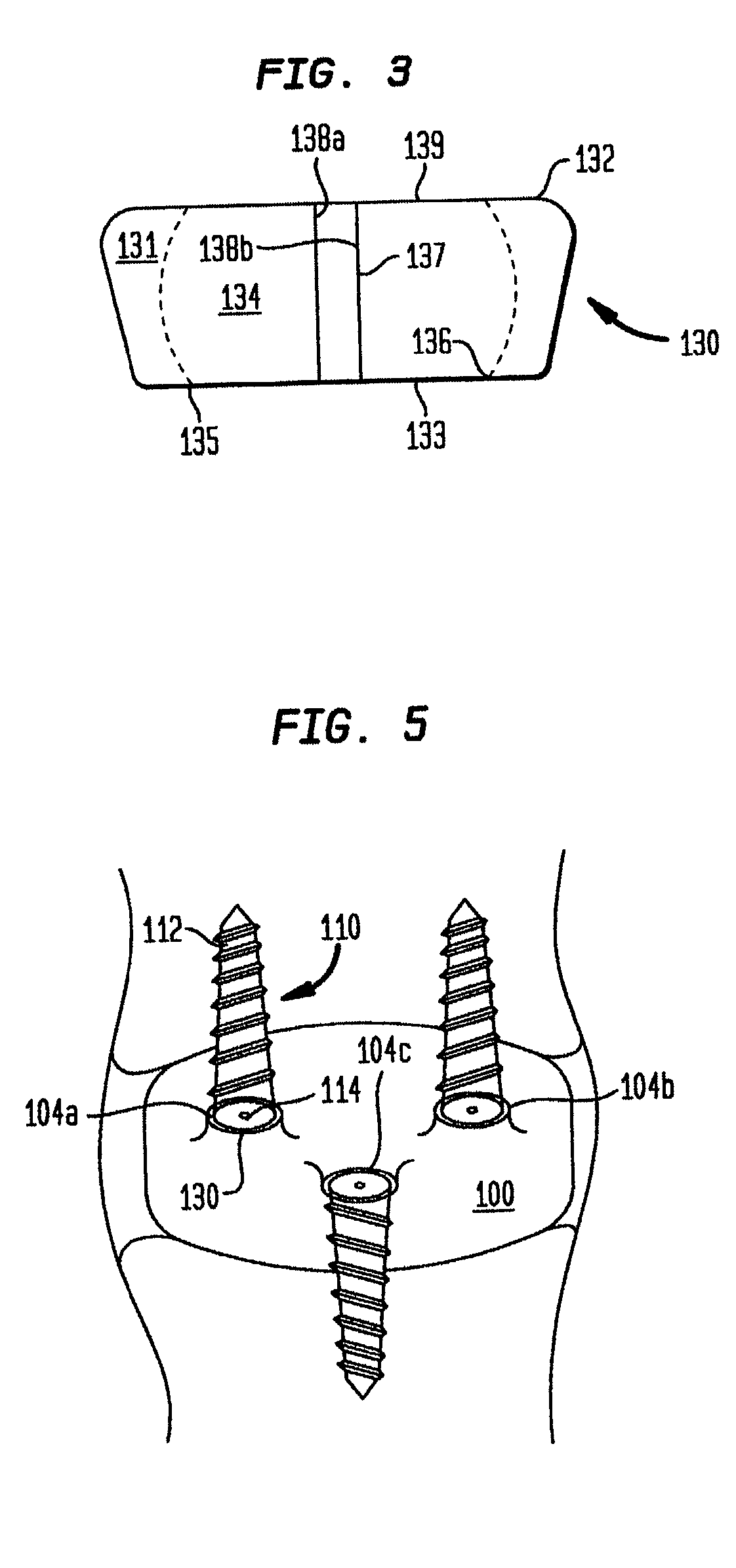Porous interbody fusion device having integrated polyaxial locking interference screws
a technology of interbody fusion and interferon, which is applied in the field of spinal implant devices, can solve the problems of loss of proper anatomical spacing between the end plates of the opposing vertebrae, considerable neurological impairment, and general failure of the intervertebral disc cartilag
- Summary
- Abstract
- Description
- Claims
- Application Information
AI Technical Summary
Benefits of technology
Problems solved by technology
Method used
Image
Examples
Embodiment Construction
[0035]While the present invention will be described more fully hereinafter with reference to the accompanying drawings, in which particular embodiments and methods of fabrication are shown, it is to be understood at the outset that persons skilled in the art may modify the invention herein described while achieving the functions and results of this invention. Accordingly, the descriptions that follow are to be understood as illustrative and exemplary of specific structures, aspects and features within the broad scope of the present invention and not as limiting of such broad scope. Like numbers refer to similar features of like elements throughout.
[0036]Referring now to FIGS. 1a-c, a porous metal intervertebral spacer device 100 is provided in side, top and bottom views, respectively. The device is disc shaped, having a diameter that is approximately eighty percent of the diameter of the end plates of the adjacent vertebral bodies. This permits a greater portion of the end plates of...
PUM
 Login to View More
Login to View More Abstract
Description
Claims
Application Information
 Login to View More
Login to View More - R&D
- Intellectual Property
- Life Sciences
- Materials
- Tech Scout
- Unparalleled Data Quality
- Higher Quality Content
- 60% Fewer Hallucinations
Browse by: Latest US Patents, China's latest patents, Technical Efficacy Thesaurus, Application Domain, Technology Topic, Popular Technical Reports.
© 2025 PatSnap. All rights reserved.Legal|Privacy policy|Modern Slavery Act Transparency Statement|Sitemap|About US| Contact US: help@patsnap.com



